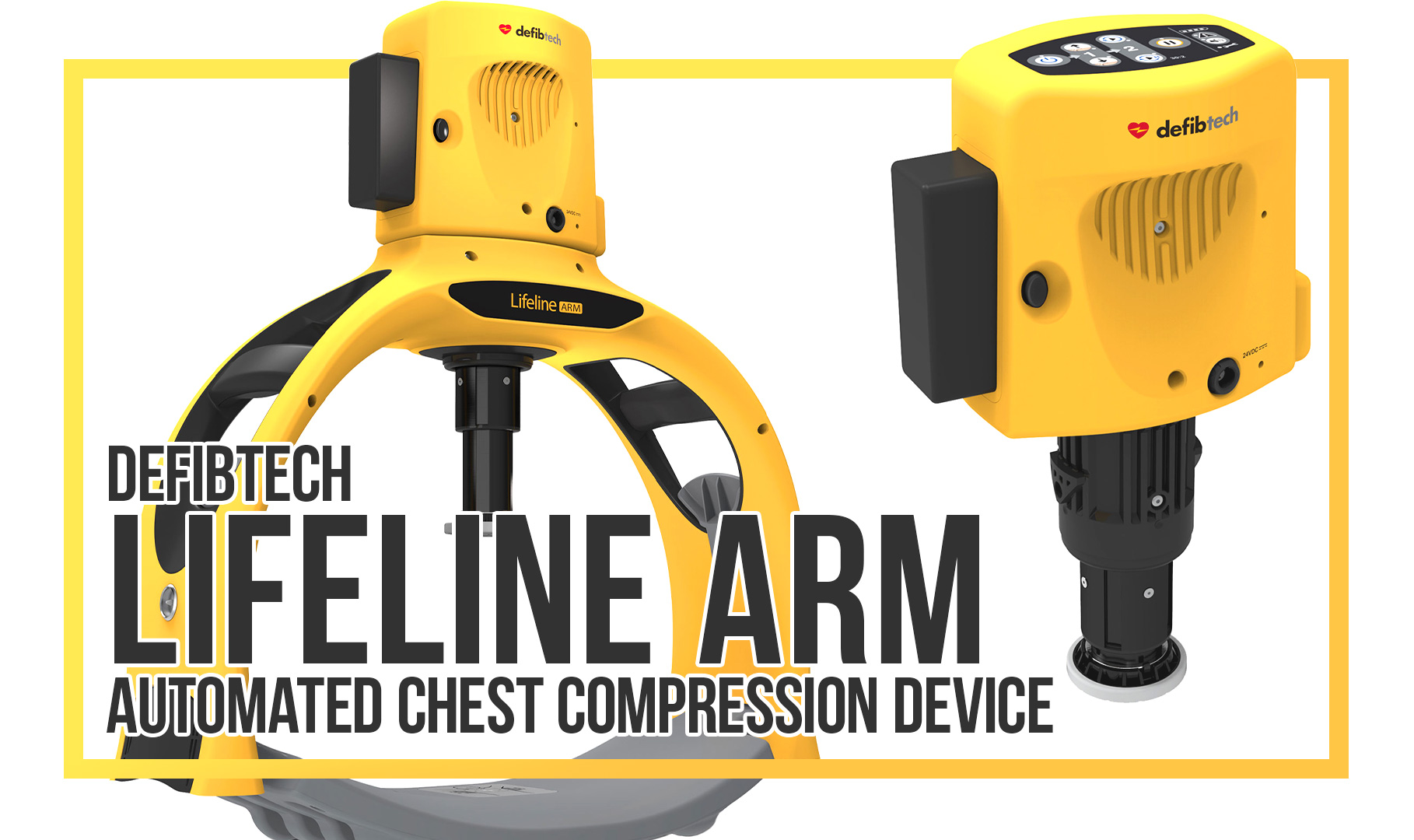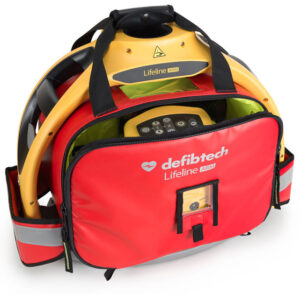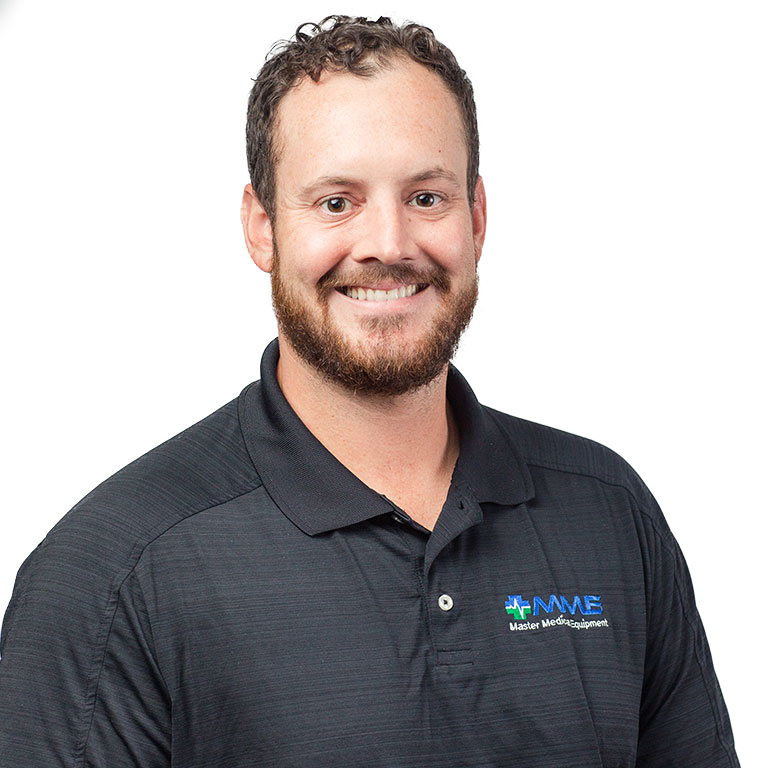Blog
Automated Chest Compression Machines: Defibtech ARM Spotlight
 Q: What is the most important thing every healthcare professional should consider before buying an Automated Chest Compression device?
Grant Cooper: Every healthcare provider, and those trained in CPR, should know the American Heart Association’s guidelines on compressions, depth, and fatigue. The best practice for conventional CPR is a ratio of 30:2 compressions-to-breaths at a rate of 100 to 120 compressions/minute. Compressions should be at least 2 inches deep for the average adult while going no deeper than 2.4 inches. The AHA warns that fatigue can affect the rescuer as early as one or two minutes into manual CPR, leading to a lower rate of compressions, less effective depth, and more human error. With an Automated Chest Compression device, you eliminate the variable of human error, especially over longer transport or rescue times.
Q: How is the Defibtech ARM improving rescues for EMS agencies?
One advantage of the Defibtech Lifeline ARM is that you can continue manual CPR while assembling the device around the patient and rescuer, eliminating missed compression times. The ARM also boasts a simple, easy-to-use interface, with the ability to toggle between continuous CPR or pauses for rescue breaths. The long-lasting, rechargeable battery pack can charge from an AC power adapter while in use. Paramedics can secure the patient’s neck and wrists with quick-detach straps for stability and safety.
Q: What unique advantages does the Defibtech Arm offer over other chest compression devices?
First responders can insert the battery in either orientation, which reduces fumbling during setup and extra assembly time in the heat of the moment. The modular design of the Lifeline ARM and the light, rigid frame assist with speedy deployment during the rescue. The frame can be attached to the backboard and snap into place between the arms of the paramedic performing CPR with its self-centering and self-locking latches. This allows for uninterrupted transfer between manual compressions and automated compressions without missing a beat. The backboard’s curved design is stable on flat ground while also conforming to curved surfaces such as stretcher beds or scoop backboards.
Q: What is the most important thing every healthcare professional should consider before buying an Automated Chest Compression device?
Grant Cooper: Every healthcare provider, and those trained in CPR, should know the American Heart Association’s guidelines on compressions, depth, and fatigue. The best practice for conventional CPR is a ratio of 30:2 compressions-to-breaths at a rate of 100 to 120 compressions/minute. Compressions should be at least 2 inches deep for the average adult while going no deeper than 2.4 inches. The AHA warns that fatigue can affect the rescuer as early as one or two minutes into manual CPR, leading to a lower rate of compressions, less effective depth, and more human error. With an Automated Chest Compression device, you eliminate the variable of human error, especially over longer transport or rescue times.
Q: How is the Defibtech ARM improving rescues for EMS agencies?
One advantage of the Defibtech Lifeline ARM is that you can continue manual CPR while assembling the device around the patient and rescuer, eliminating missed compression times. The ARM also boasts a simple, easy-to-use interface, with the ability to toggle between continuous CPR or pauses for rescue breaths. The long-lasting, rechargeable battery pack can charge from an AC power adapter while in use. Paramedics can secure the patient’s neck and wrists with quick-detach straps for stability and safety.
Q: What unique advantages does the Defibtech Arm offer over other chest compression devices?
First responders can insert the battery in either orientation, which reduces fumbling during setup and extra assembly time in the heat of the moment. The modular design of the Lifeline ARM and the light, rigid frame assist with speedy deployment during the rescue. The frame can be attached to the backboard and snap into place between the arms of the paramedic performing CPR with its self-centering and self-locking latches. This allows for uninterrupted transfer between manual compressions and automated compressions without missing a beat. The backboard’s curved design is stable on flat ground while also conforming to curved surfaces such as stretcher beds or scoop backboards.
 MME also offers an alternate lighter, tactical carrying case that aids in setup assembly and carries a smaller footprint inside your vehicle. (Pictured to the right)
Q: What steps can a facility take to increase the lifespan of its Defibtech ARM?
The structural design and materials of the ARM’s frame and backboard result in a highly durable and impact-resistant device. Built to meet high standards, the ARM is manufactured to withstand small particulates and water spray and meets military standards for shock and vibration testing. Even so, all capital equipment should be PM’d annually for calibration and diagnosis. The Defibtech ARM has a built-in service indicator light that alerts the caregiver when it’s time for annual maintenance. Additionally, the USB port on the compression module allows the paramedic to make software updates from their personal computer.
Q: What cost-saving tips can you share regarding the Defibtech ARM?
In this case, the cost-saving is the price tag on the unit. The Arm is the most cost-effective automated compression device on the market. Additionally, the ability for the paramedics to perform software updates without sending it in for service saves on maintenance costs.
Q: Are there any common misconceptions about Automated Chest Compression devices?
A common misconception about automated chest compression devices is that the units can’t be universally positioned or consistently hit proper depth. However, the smart, software-driven algorithm adapts and ensures appropriate chest compression depth and rate consistency. Another misconception among EMS is that ACC devices are difficult to deploy and often interrupt CPR. The ARM is designed to be rapidly deployed and even assembles through the arms of the paramedic administering manual compressions. This allows other rescuers to assemble and activate the device without missing a beat of manual compression.
Q: Anything else you’d like to share about Defibtech Lifeline ARM?
The ARM’s powerful battery is designed for extended runtimes and fast recharges. In addition, the packs can be inserted either up or down and have a quick-eject feature for fast, tactical battery swaps. The batteries can charge from AC power while in use. Another great feature of the Arm is that the ARM supports event capture and post-event review. A USB port on the module allows for data logging downloads via connection to a computer.
MME also offers an alternate lighter, tactical carrying case that aids in setup assembly and carries a smaller footprint inside your vehicle. (Pictured to the right)
Q: What steps can a facility take to increase the lifespan of its Defibtech ARM?
The structural design and materials of the ARM’s frame and backboard result in a highly durable and impact-resistant device. Built to meet high standards, the ARM is manufactured to withstand small particulates and water spray and meets military standards for shock and vibration testing. Even so, all capital equipment should be PM’d annually for calibration and diagnosis. The Defibtech ARM has a built-in service indicator light that alerts the caregiver when it’s time for annual maintenance. Additionally, the USB port on the compression module allows the paramedic to make software updates from their personal computer.
Q: What cost-saving tips can you share regarding the Defibtech ARM?
In this case, the cost-saving is the price tag on the unit. The Arm is the most cost-effective automated compression device on the market. Additionally, the ability for the paramedics to perform software updates without sending it in for service saves on maintenance costs.
Q: Are there any common misconceptions about Automated Chest Compression devices?
A common misconception about automated chest compression devices is that the units can’t be universally positioned or consistently hit proper depth. However, the smart, software-driven algorithm adapts and ensures appropriate chest compression depth and rate consistency. Another misconception among EMS is that ACC devices are difficult to deploy and often interrupt CPR. The ARM is designed to be rapidly deployed and even assembles through the arms of the paramedic administering manual compressions. This allows other rescuers to assemble and activate the device without missing a beat of manual compression.
Q: Anything else you’d like to share about Defibtech Lifeline ARM?
The ARM’s powerful battery is designed for extended runtimes and fast recharges. In addition, the packs can be inserted either up or down and have a quick-eject feature for fast, tactical battery swaps. The batteries can charge from AC power while in use. Another great feature of the Arm is that the ARM supports event capture and post-event review. A USB port on the module allows for data logging downloads via connection to a computer.
 Grant Cooper
Senior Sales Representative
Master Medical Equipment
Grant Cooper
Senior Sales Representative
Master Medical Equipment
